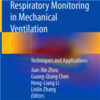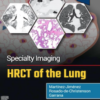IVCDV is not a reliable indicator of preload responsiveness
ccforum.biomedcentral.comDuring mechanical ventilation with Vt = 6 mL/kg, the effects of passive leg raising (PLR) can be assessed by changes in pulse pressure variation (PPV). If inferior vena cava diameter (IVCDV) is used, it should be expressed in percent and not absolute changes.
In 30 critically ill patients without spontaneous breathing and cardiac arrhythmias, ventilated with Vt = 6 mL/kg, we measured cardiac index (CI) (PiCCO2), IVCDV and PPV before/during a PLR test and before/during a Vt challenge. A PLR-induced increase in CI ≥ 10% defined preload responsiveness.
The effects of the Vt challenge can be assessed on PPV, but not on IVCDV, since the diagnostic threshold is too small compared to the reproducibility of this variable.
At baseline, IVCDV was not different between preload responders (n = 15) and non-responders. Compared to non-responders, PPV and IVCDV decreased more during PLR (by − 38 ± 16% and − 26 ± 28%, respectively) and increased more during the Vt challenge (by 64 ± 42% and 91 ± 72%, respectively) in responders. ∆PPVPLR, expressed either as absolute or as percent relative changes, detected preload responsiveness.

















